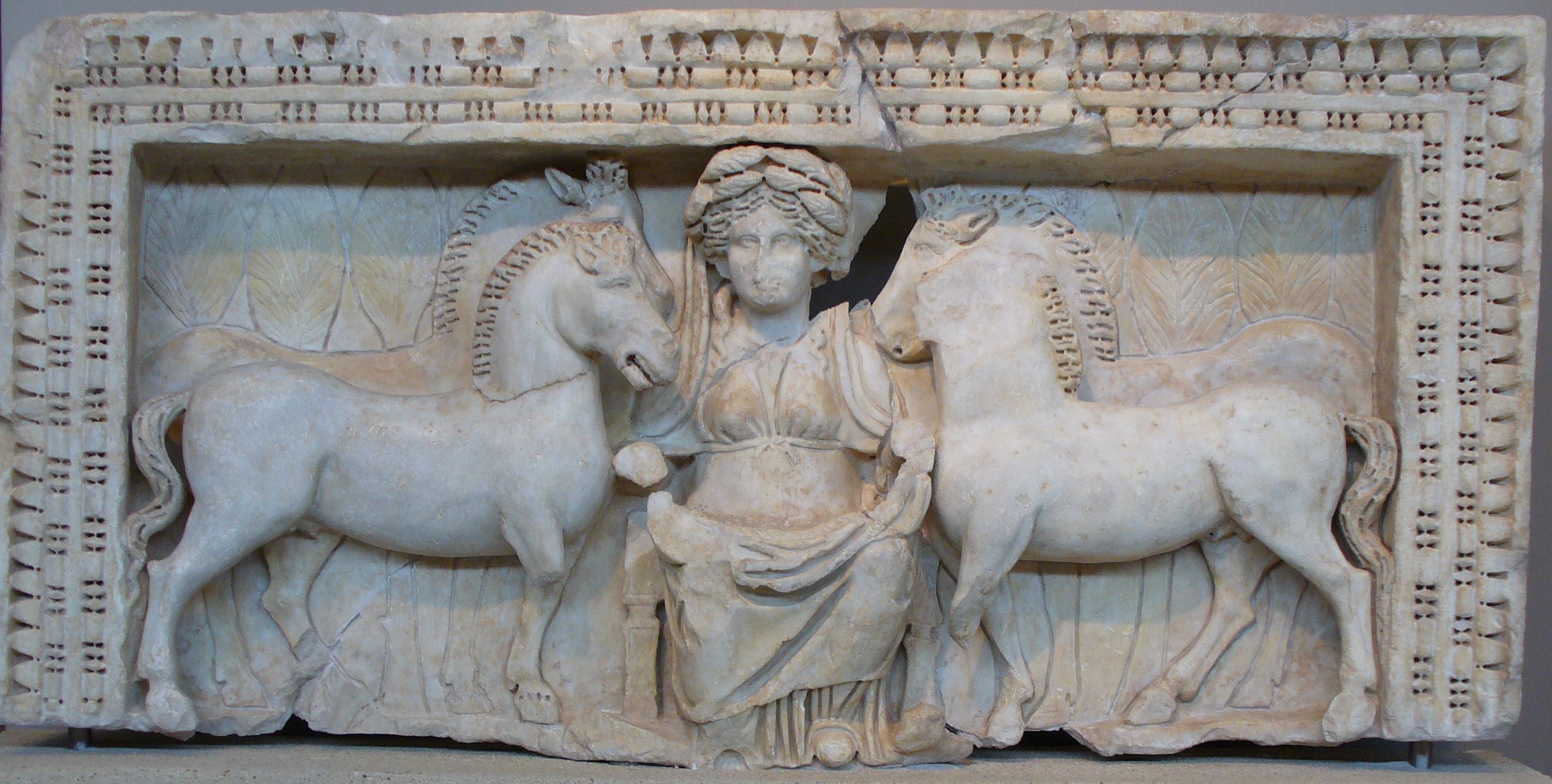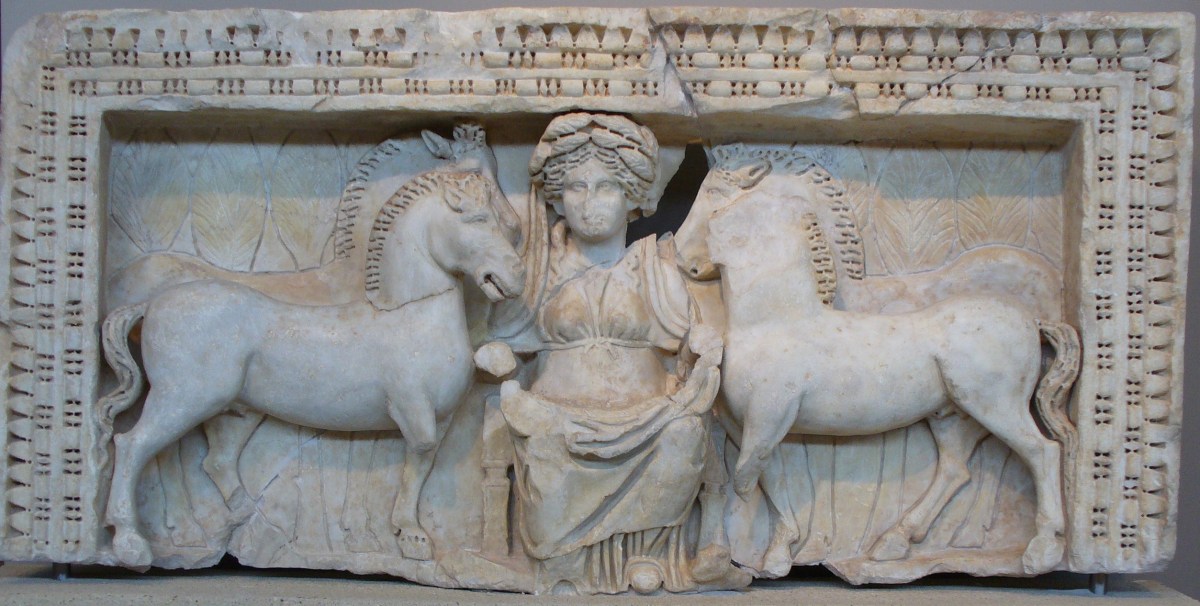Mythology Monday: Epona, The Celtic Goddess of Horses Who Conquered Rome


Studying and writing about mythology can be a very frustrating thing. To mix philosophy in here, it’s often like the allegory of the cave because we’re not studying original deities or myths themselves, but instead the shadows they cast in history. When we look at a god from some cultures, we’re only seeing a small fraction of what the original story was. That’s the case with the Romano-Celtic goddess Epona.
The Celts had a complex culture that spanned millennia and ranged from the Halstatt Culture to the east in Germany in the bronze age all the way west to both Britain and Ireland and even the Iberian peninsula. The Celtic culture was expansive and complex, with a deeply spiritual and mythic life led by Druids, who carried on an ancient tradition of stories and beliefs passed down orally over years of training.
But that oral tradition means nothing the ancient Celts believed was written down, and so our sources for their myths and beliefs come from secondary documentation, like Romans or, even more removed, the Christian monks writing centuries after the fact. This is what makes Epona such an interesting figure, because not only is she one of a few Celtic deities we know quite well, but we know her because she was pulled into Roman culture, and yet, we don’t know how the Celts worshipped her.
Epona was a Celtic Goddess of Horses, who was absorbed into Roman religion. Just that itself is interesting. When the Romans were out there conquering everyone and encountered other Gods, they had a tendency to practice a specific kind of syncretism, where they didn’t assume any god they encountered wasn’t real, they just usually assumed that god was a version of a Roman deity. They conflated Brigid with Minerva and Odin with Mercury, but in some cases, there wasn’t a god they could directly syncretize, and so sometimes, that god would be subject to their own worship and develop a Roman cult.
That’s what we think happened with Epona, who was worshipped widely among the Celts of Gaul (modern-day France) and Germania (I shouldn’t have to tell you where that is). We first find Roman reference to her in around 100 BCE, but that’s just the first reference and there’s evidence she was around before that, and obviously had a long history among the Celts as a powerful goddess. She was “the great mare” but also the patroness of horses, and that caught on with the Romans.
And that makes sense—horses were incredibly important to the Celts and their way of life. Horses were also incredibly important to the Romans, especially the Roman legions who first encountered Epona’s worship among the Celts. As I mentioned, Romans looked for the ways that gods of other cultures mirrored their own, but there wasn’t really a Roman god of horses specifically. Poseidon had some equine associations in Greece, but Neptune was pretty much a god of the sea, so it makes sense that Epona’s worship was adopted into Rome. Because hey, horses are really important, so if there’s a goddess who likes looking after them, let’s bring her into the fold.
Epona was worshipped widely in Imperial Rome, with icons popping up all over, especially in stables. She even had images in the imperial stable and was called Epona Augusta, associating her with the Empire itself. Despite this, we don’t have many stories about her aside from one myth about her conception where she was born when a man mated with a mare. This sounds kind of weird but this, and indeed Epona, makes more sense when you understand a bit more about the Celts.
There’s a lot we don’t know about the Celts, but we do know that many of their goddesses were associated with sovereignty, meaning they gave rulers the right to rule. In Ireland, the rituals of becoming a king intimately involved goddesses, who often represented the land itself, but could also be personified by a horse. Horses may have been sacrificed, eaten, or otherwise used in rituals conferring kingship, and in some instances, there were rituals involving a king “mating” with the land goddess, who also might have been a horse or a person, we just don’t know. But we do know horses, especially mares, were like the spirit of the land and a goddess made material in that culture. But Gaul and Ireland are a long way apart.
We can’t know for sure if Epona served the same roles because Celtic cultures weren’t all the same and we’re comparing myths centuries apart, but we can actually learn from the Romans here. Roman syncretism worked because, in some ways, the Romans were right that some local gods were “versions” of the same gods worshiped in Rome. Many gods may have had had common ancestors among the Proto-Indo-Europeans (as Wikipedia states, “The main mythologies used in comparative reconstruction are Indo-Iranian, Baltic, Roman, and Norse, often supported with evidence from the Celtic, Greek, Slavic, Hittite, Armenian, Illyrian, and Albanian traditions as well.”) Deities evolve and migrate and change, but some features remain the same. That’s true of the Celts as well, and that’s how the myth and worship of one goddess can help us understand other divinities.
That connects us back to Epona, who may have been much more to the Gallic and Germanic Celts than just a “horse goddess.” She was the personification of the land and sovereignty … which makes the Romans colonizing her a bit more meaningful. They didn’t just conquer Celtic lands, they adopted an important Goddess who represented those lands and the people’s power to rule themselves, and made her Roman. But that also allowed this one facet of Celtic identity to endure beyond conquest.
While other Celtic deities were lost or almost forgotten, Epona endured as herself. The Celts rarely made images of their gods, but because Epona became Roman, we have a whole lot of statues of her, almost always flanked by horses. Just these images of a goddess from a culture that generally didn’t write down their stories or make images of gods is a treasure. Epona has even endured beyond Rome, into a video game of all things, where she’s given her name to Link’s horse in the Zelda game series.
Epona is fascinating not just for her myth, but because of what she teaches us about myths themselves and how she reminds us that what we don’t know about these gods is often far more than what we do know.
We hope you enjoyed this mythology Monday! This topic came thanks to a suggestion by commenter
(image: I, QuartierLatin1968, via Wikimedia Commons)
Want more stories like this? Become a subscriber and support the site!
—The Mary Sue has a strict comment policy that forbids, but is not limited to, personal insults toward anyone, hate speech, and trolling.—
Have a tip we should know? [email protected]
